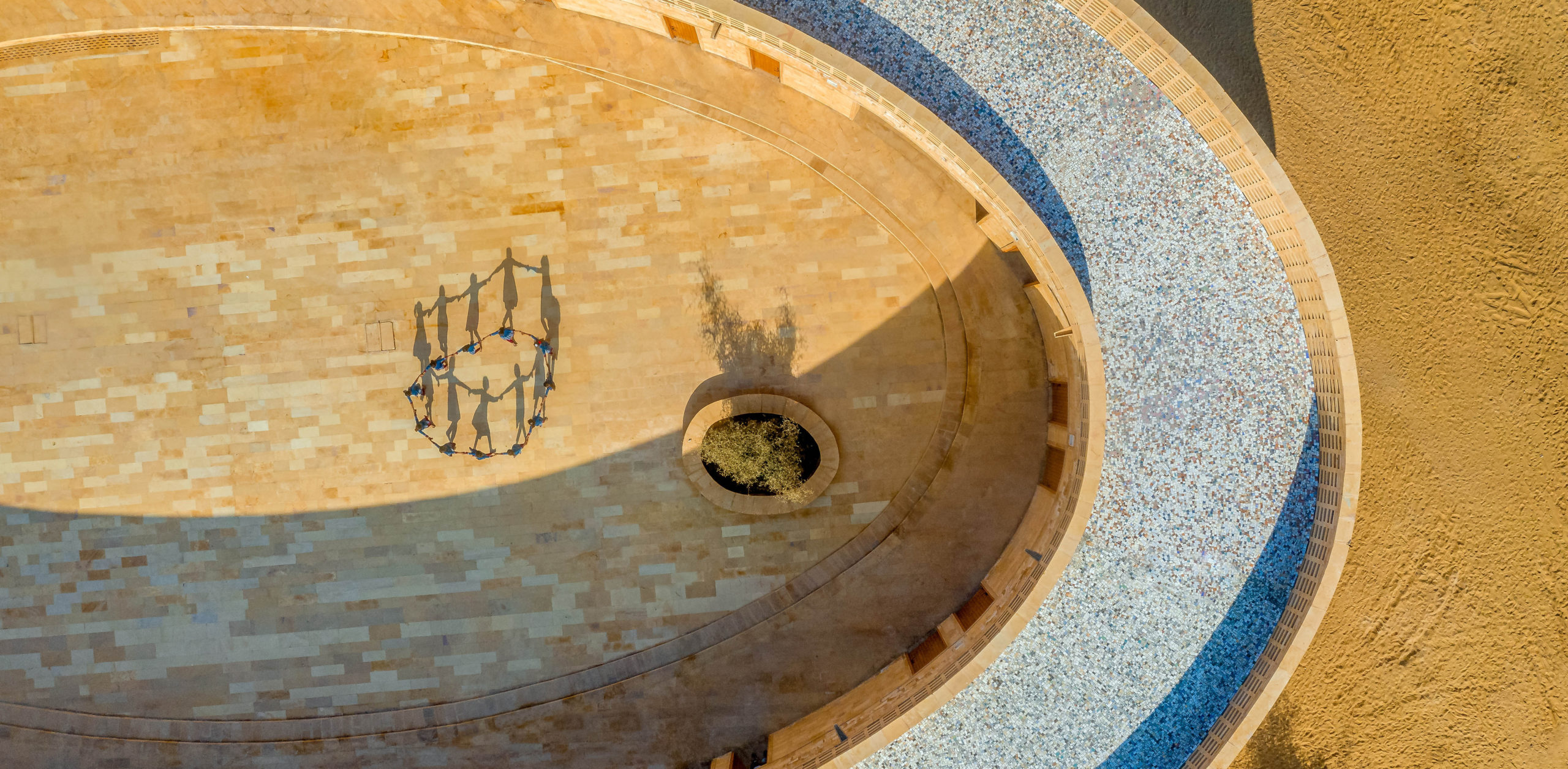Architects: Want to have your project featured? Showcase your work through Architizer and sign up for our inspirational newsletters.
In a previous article we discussed the growing push for bird-friendly design. Without conscious design considerations and, perhaps, legal frameworks to promote and enforce them, architectural glazing can be deadly to birds. Following the topic, this article introduces design approaches that are particularly helpful to reducing bird collisions.
Before getting to the solution, we need to be clear about the problem: there are in general two occasions on which birds are likely to fly into glazed surfaces. The first of such instances involves glass surfaces that are highly transparent and do not appear like anything solid. As a result, birds might consider the spaces behind clear glass as open spaces that are safe to enter.
The second occasion occurs when glass surfaces are highly reflective. This is more likely on high-rises and skyscrapers (although in some cases, it applies to ground-level installations as well). Reflective coatings are commonly used to disrupt visions from outside the building to inside, hence protecting privacy. Yet, when the building reflects the sky or environmental elements such as trees, through avian vision, the building becomes the objects that it reflects. This may be OK in cases where what is being reflected is another building, but it is when the sky or trees (especially those on nearby green roofs) appear on the skyscraper glass that birds are unlikely to avoid it.
Dangerous glazing is therefore glazed areas that appear like voids large enough for birds to pass through. Accordingly, the solution to this is to eliminate or reduce the size of these “visual voids.” As suggested by American Bird Conservancy, the maximum distance between horizontal lines on glazing should be 2 inches, and for vertical lines, it should be 4 inches (data generated from songbirds). Following this 2 x 4 rule, there are several solutions to bird collisions.
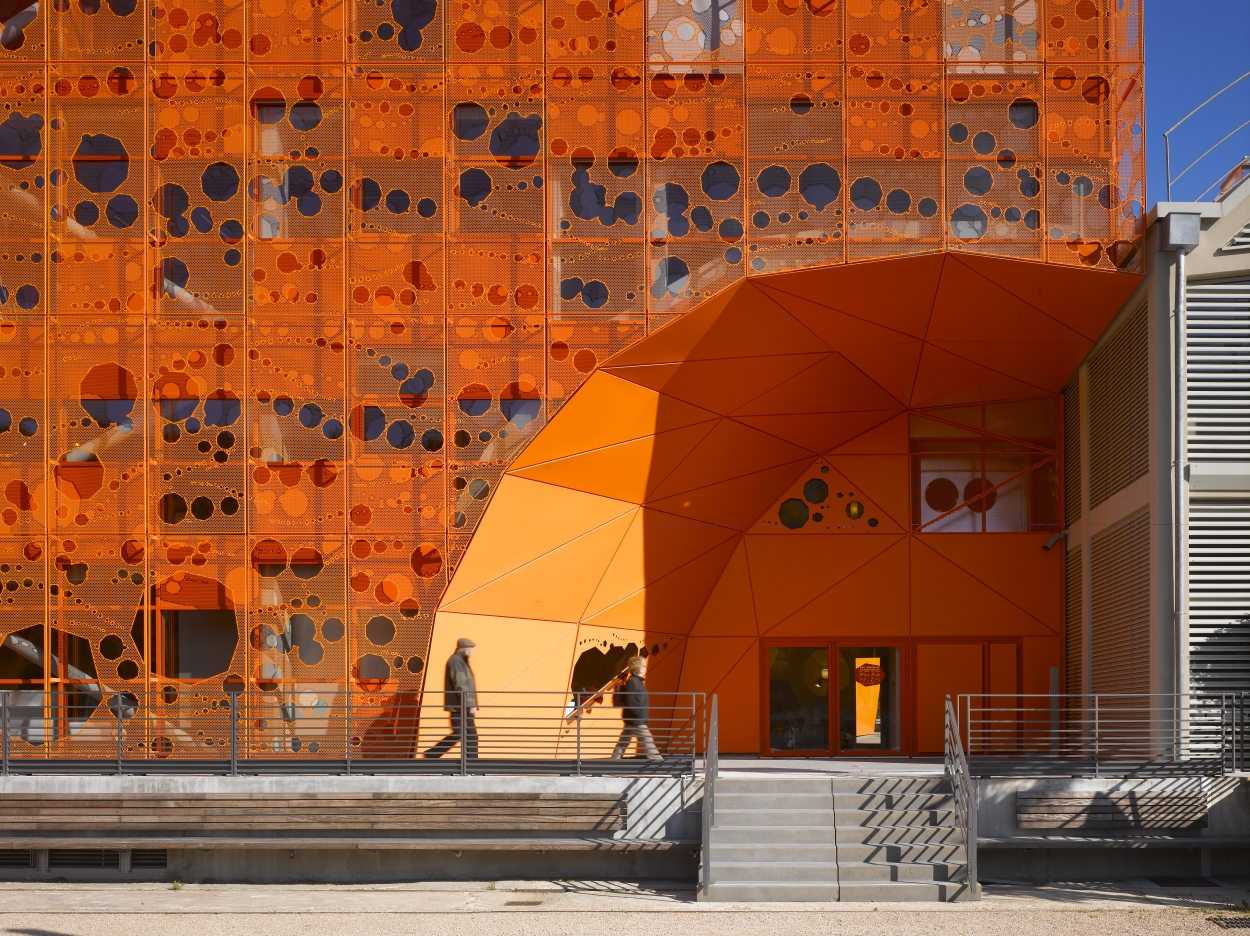
The Orange Cube by Jakob + Macfarlane Architects, Lyon, France
Additional Exterior Layer
An additional layer outside the glazed area can help reduce the size of the visual voids. The additional layer could be external nettings, grilles, shutters or anything that visually breaks the visible glass area down. These could be either applied to only the glazing area or incorporate into the façade design. This additional skin can be aesthetically pleasing while assure natural lighting and views inside the building.
One example of this bird-friendly design approach is the Orange Cube by Jakob + Macfarlane Architects. The building is wrapped in pierced steel screens, which become one of the most iconic elements of the design while allowing daylights to penetrate through.
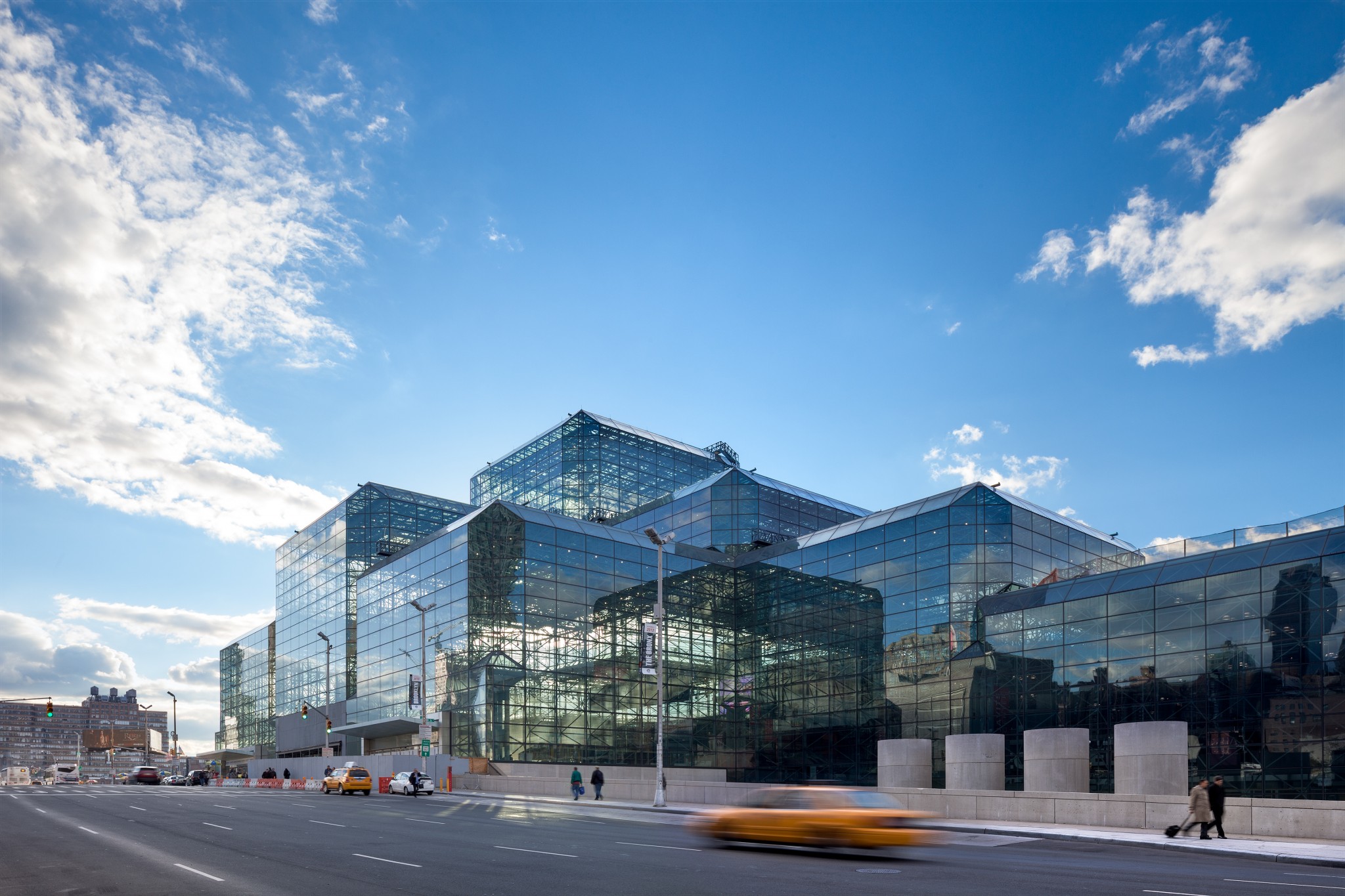
Exterior of Javits Center, James Ingo Freed of Pei Cobb Freed & Partners, New York, NY. Image via newyorkmeetings.com.
Patterned Glass
If the existing building condition does not allow adding another layer over the glazing, an alternative method is to put visible patterns on the glazing. This could be as simple as taping vertical or horizontal lines onto the glass following the 2 x 4 inches safe spacing rule. It is better when patterns are on the external side of the glass as their visibility will not be affected by even the strongest reflections. However, modifying outside the glazing is more feasible on the ground floor or balconies.
For tall buildings that have massive glazed areas with nearly no accessibility from outside the glass, bird-friendly patterns could be added on the interior, as has been done at the Javits Center. As monitored by ABC, bird collisions are only 10% of that before patterned glass panels were installed.
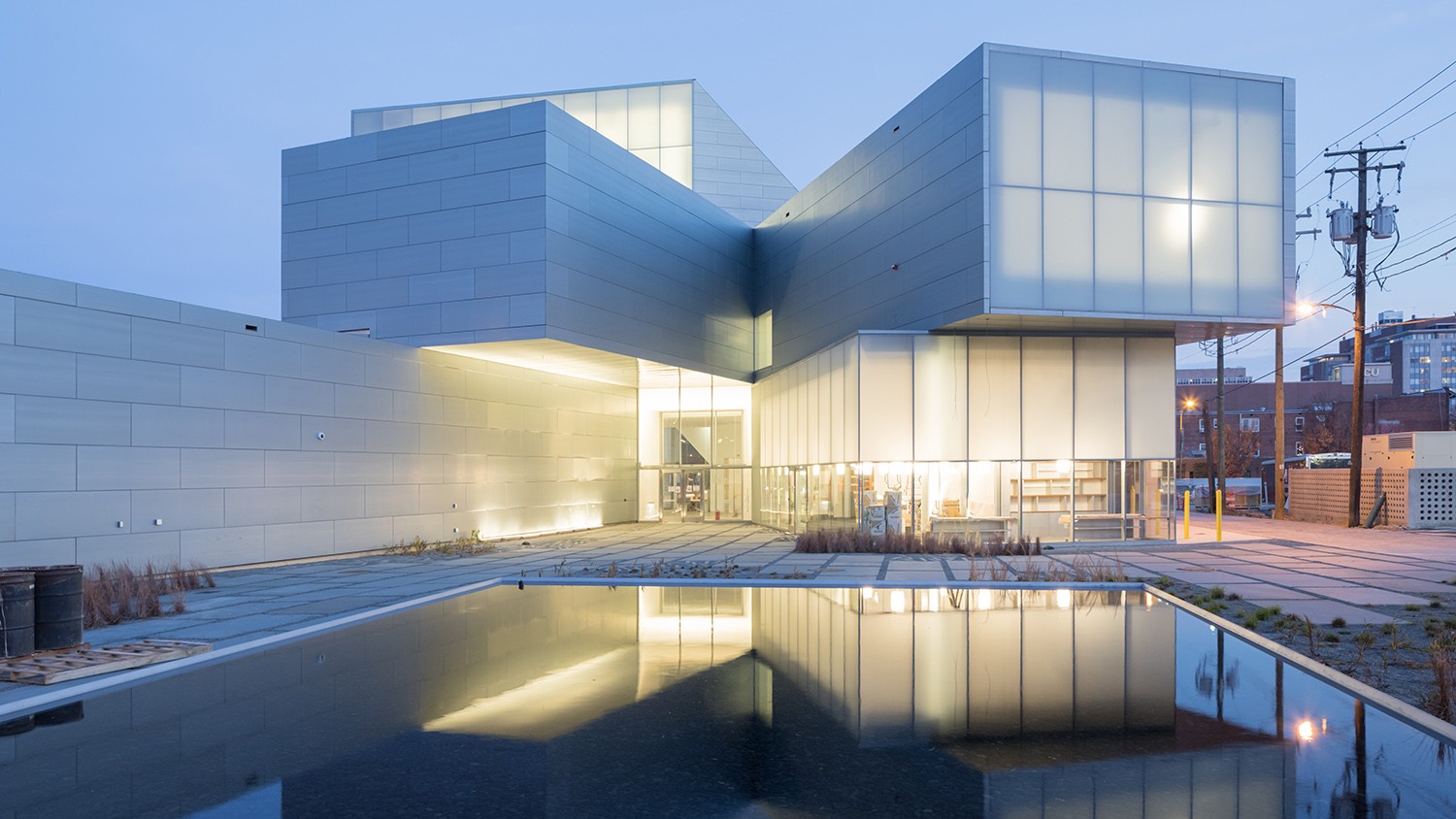
Institute for Contemporary Art, VCU by Steven Holl Architects, Richmond, Virginia
Translucent Glass
Similar to patterned glass, glass with reduced reflectiveness and transmission rates can be retrofitted using sandblasting on-site or incorporated into the design at the very beginning. The result might run against the stereotype of glass being clear and shiny, creating a soft and dreamy appearance like that of the Institute for Contemporary Art on the campus of Virginia Commonwealth University by Steven Holl Architects. The building’s façade comprises large areas of translucent glass panels and titanium zinc claddings. By sacrificing transparency, birds’ life and safety and people’s privacy are secured.
UV Coated Glass
If you insist on retaining the transparency and reflectiveness of your glazing but still want to contribute to reducing bird collisions, you may try out the ultraviolet coated glass. The principle behind this is that UV lights are visible to most avian visions but not to human visions. Therefore, using paints that reflect UV lights to paint patterns on glass following the 2 x 4 rule can partially achieve the protective effects of patterned glass without disrupting humans views.
Nonetheless, some types of birds such as raptors, kingfishers, hummingbirds, and pigeons, are less sensitive to UV lights, so the range of lights reflected by the coating needs to be carefully tested to adapt to all birds’ eyes while minimizing its visibility to human eyes.
Primary Solution: Control the Amount of Glass Used
To solve the problem of bird collisions from its root, we need to reduce the amount of glazing in our designs. Clear glazing brings natural lights into the spaces and is almost tied to the aesthetics of modernism or contemporary architectures; however glass is not the only way to sustain sufficient interior luminosity and to make buildings more fashionable. Besides, the problem with large areas of glazing extends beyond bird collisions: overheating and thermal loss environmental considerations, while glazed high-rises also contribute the generic cityscapes of the 21st century.
Why not take the chance and rethink your design in a bird-friendly way? Add bird-friendly to your design checklist today and see ABC’s Bird-Friendly Building Design handbook for more detailed information.
Architects: Want to have your project featured? Showcase your work through Architizer and sign up for our inspirational newsletters.
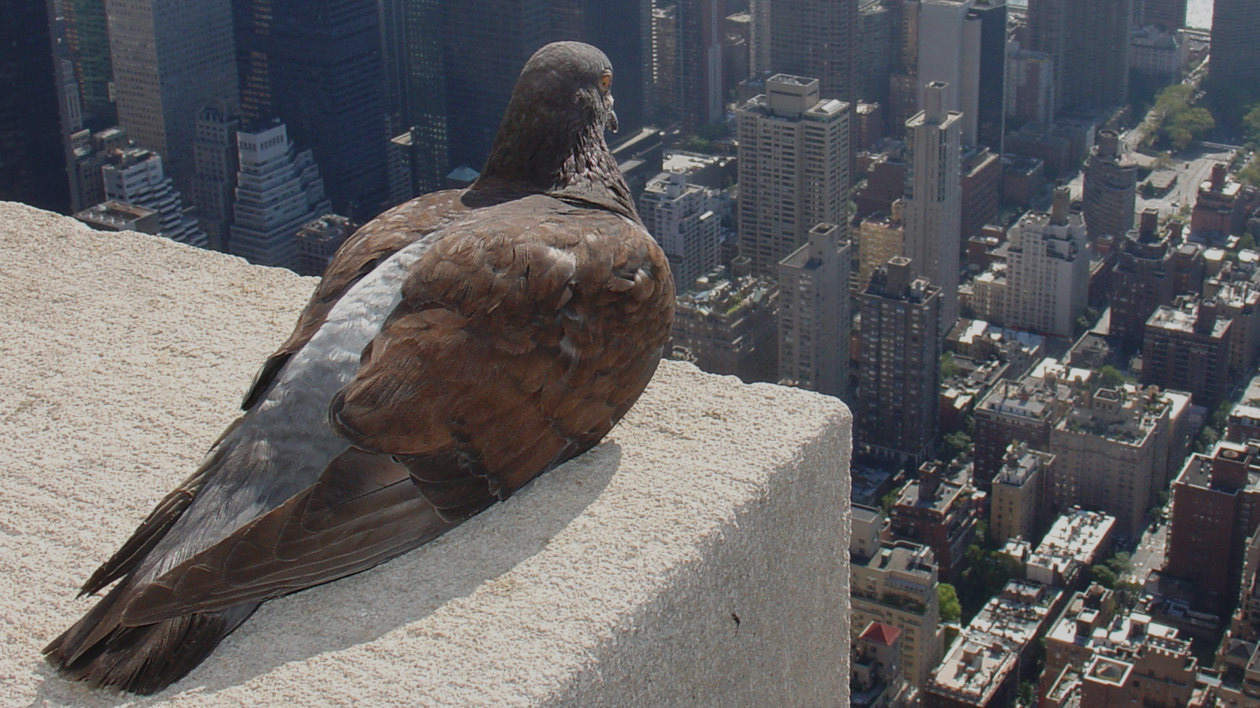





 Institute for Contemporary Art at VCU
Institute for Contemporary Art at VCU  The Orange Cube
The Orange Cube 